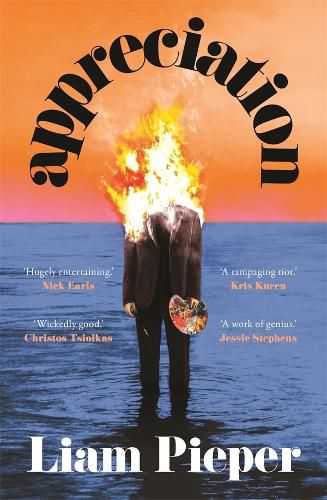As someone who enjoys essays, art criticism, memoir, and art history texts, mostly you’ll find I am reading non-fiction. So, it was a pleasure to pick up two new Australian novels this winter that I couldn’t put down, Appreciation by Liam Pieper and The Work by Bri Lee.
Both books were influenced and informed by the art world but transported the reader on narrative arcs with plenty of creative license. Not only will these tales suit an ‘art-initiated audience’ with in-jokes, satire and some critique, but each tackles and pokes fun at finance, politics and power in the (art) world, which is amusing and insightful.
Pieper and Lee also riff on romance and sex, identity and reflect on contemporary life. Individually the books address what people are willing to wager or risk for their ambition. ‘Love’ and ‘Money’ are big themes in each text, with varying saturation.
While at times our authors offer a laugh out loud moment of cheeky veracity their references are studied enough that readers in the know will chuckle with acknowledgment and possibly pause to think that, in so far as art and finance anecdotes go, fact can be stranger than fiction!

Appreciation by Liam Pieper
‘Appreciation’ revolves around the personal perspective of Oli Darling, a mid-career artist who’s had astonishing early success, but then he ends up on a popular panel TV show and says live to air ‘the only thing that can get a rich white guy cancelled.’
What unfolds is broken into parts that reflect and refract the actors in his life. The artist has found his place in popular culture, and the auction records, with a recipe of being a queer, salt of the earth, painter who expresses his version of contemporary masculinity; but is that really the secret sauce? As the publisher writes on the novel ‘Everything in this world has a price. A great work of art is no exception. And what fortune was ever built without a little subterfuge?’

The Work by Bri Lee
‘The Work’ is told from the two perspectives of Lally and Pat, a ‘girl meets boy’ story, set between Sydney and New York City. From where she sits Lally is an independent woman with a hard-won place in the cut-throat NYC gallery scene, she showcases challenging and diverse artists (for the merit, and hope to make it into museum collections). Pat is a boy from country Queensland. His private school scholarship had him rub shoulders with, maybe not the future buyers, but the problematic parents, of fine art. The lovers cross paths and much of the novel is about their burgeoning love story, smut consistently included. As the publisher says this is a work ‘about the biggest intersections of life: of art and commerce, of intimacy and distance, of talent and entitlement, and of labour and privilege.’ Not that you’ll need incentive but the ending is juicy, and especially relevant to our future and technology.
Up next I am looking forward to reading ‘The Other Side’ by Jennifer Higgie that traces women artists and their connection to spiritualism, ‘All that Glitters’ by Orlando Whitfield a memoir that touches on greed, international art fraud and friendship as well as ‘Tits Up’ by Sarah Thornton that explores diverse truths about breasts.